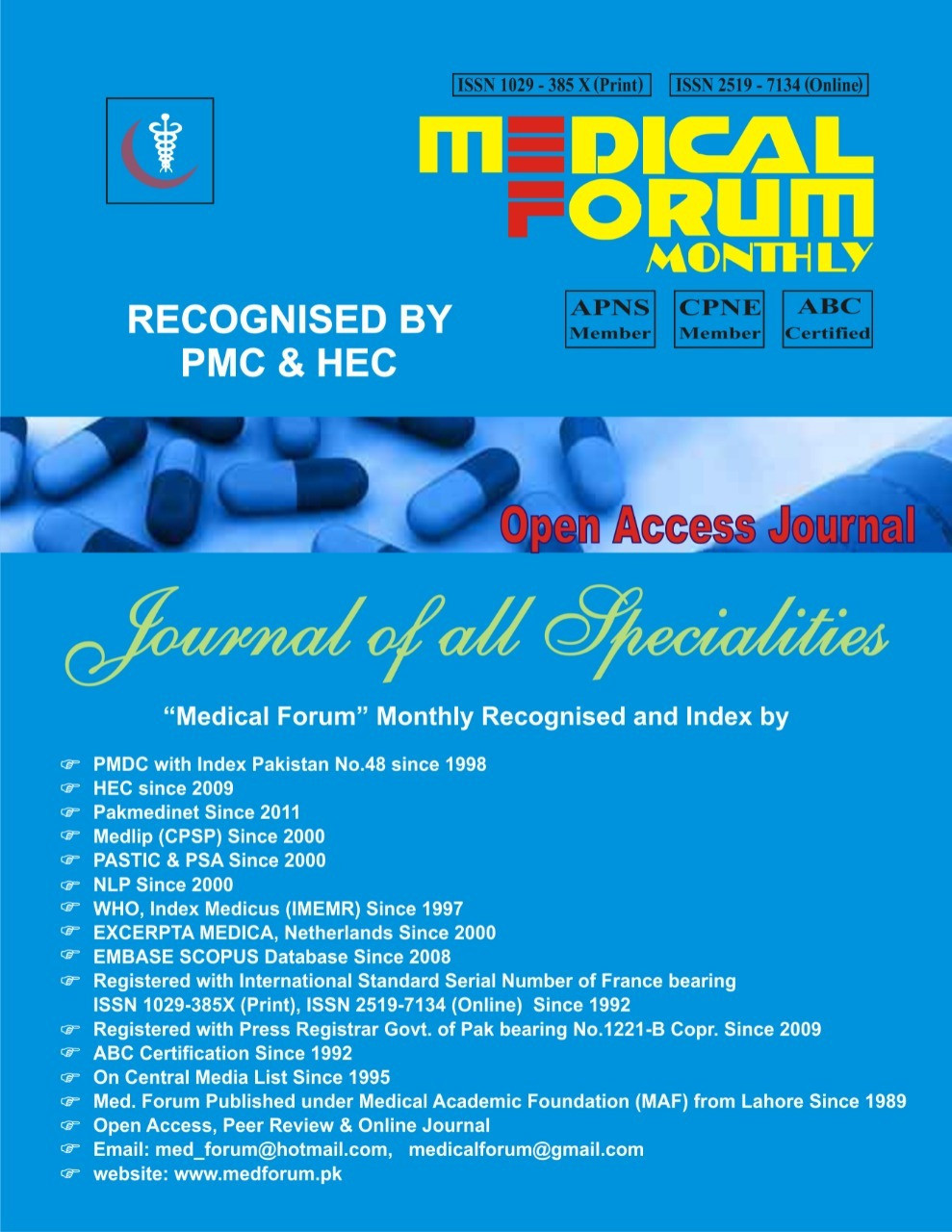
10. Antibiotics Sensitivity Patterns of Enteric Fever in a Tertiary Care Hospital
Abdul Khaliq, Syed Kalim ur Rehman, Syed Mohsin Ali Shah, Imran, Muhammad Kashif Afridi and Sabir Khan
ABSTRACT
Objective: To determine frequent organisms causing enteric fever, measure the frequency of antibiotic resistance among isolates of Salmonella Typhi and Salmonella Paratyphi, and analyze the antibiotic sensitivity patterns of enteric fever patients in a tertiary care hospital.
Study Design: A retrospective analysis study.
Place and Duration of Study: This study was conducted at the department of Pediatrics Khyber teaching hospital Peshawar from December 2022 to December 2023.
Methods: Examine blood culture data collected. Patients with enteric fever, aged 1 to 12 years, who have positive blood cultures for Salmonella Typhi or Paratyphi are eligible. Recognized protocols do testing for antibiotic susceptibility.
Results: Three hundred individuals with an enteric fever diagnosis were included in the research. Patients ranged in age from 1 to 12 years, with a mean age of 28±5.3 years. Of these, n-195 (65%) had Salmonella Typhi isolated from it, while n-105 (35%) had Salmonella Paratyphi. According to tests for antibiotic sensitivity, n-255 (85%) of the isolates of Salmonella Typhi and n-210 (70%) of the isolates of Salmonella Paratyphi were resistant to fluoroquinolones. Furthermore, n-180, or 60%, of the isolates of Salmonella Typhi showed signs of resistance to third-generation cephalosporins. These results point to a worrying pattern of antibiotic resistance in the microorganisms responsible for enteric fever within the population under study.
Conclusion: The study discovered concerningly high levels of antibiotic resistance among the isolates of Salmonella Typhi and Salmonella Paratyphi isolated in enteric fever patients at the tertiary care hospital. Since a significant part of isolates are resistant to fluoroquinolones and third-generation cephalosporins, there is an urgent need for comprehensive antimicrobial stewardship and monitoring systems to avoid the emergence of multidrug-resistant strains and to advise appropriate antibiotic administration.
Key Words: Enteric fever, Antibiotic sensitivity, Antimicrobial resistance.
